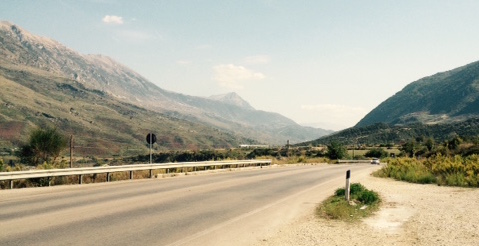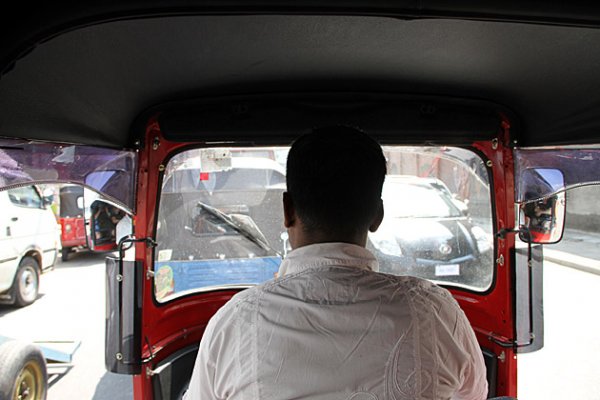
Not too long ago, Pettah used to be the heart of commercial Colombo. It was where simply anything could be found, from foreign currency exchangers lining the roads, to second-hand bookstores tucked in nooks, and sprawling wholesale marketplaces.
This has been gradually changing over the years—with the floating market coming up, then the St. John’s fish market being relocated to Peliyagoda, and so on. Colombo’s ever-expanding high-rises and hotels need space—space which is made by pushing out older, more derelict structures within the city.
Why ‘Manning’?
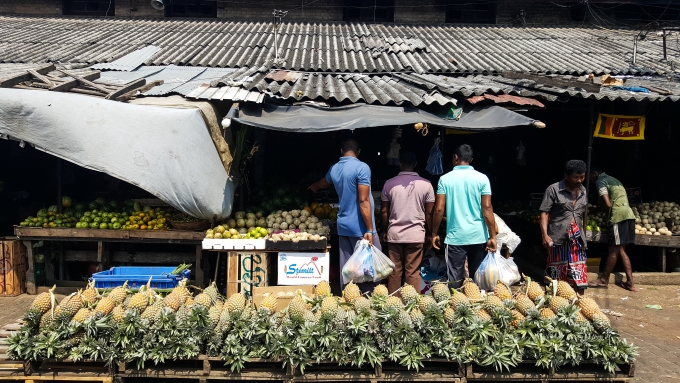
Finding your way in could be a bit difficult. There are fruit stalls all around, so you have to walk through them to get indoors—where pile upon piles of fruit are sold wholesale. Image credit: Aisha Nazim
If you’ve ever been curious as to how Manning Market got its name, you may put it to rest. Christened after Ceylon’s then-governor William Manning (who served in Ceylon from 1918-1925), it was initially called the Manning food warehouse before Manning Market came into use. The name stuck despite an attempt to rename it as the New Market.
While no one seems to know when exactly the marketplace was first established, historian Frederick Medis told Roar Media that it is around 150 to 175 years old. Vendors who still conduct business in the area reiterate that it is “over a hundred years old,” as they point to the cobblestones, large brickwork, and crumbling colonial architecture.
Once the epicentre of the city for suppliers and buyers, its popularity as the sole provider of fresh produce over the last few years has decreased.
The Evolution Of A Warehouse
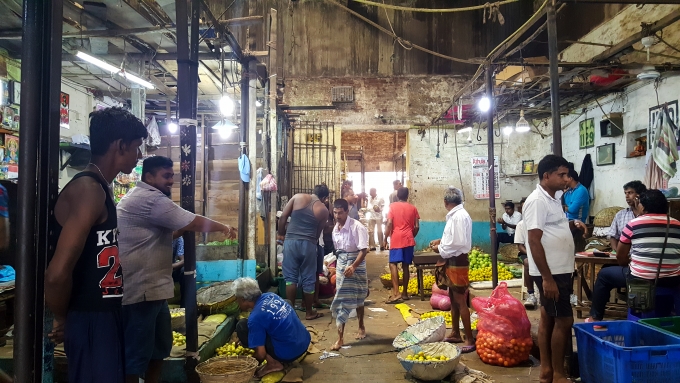
The buildings were initially warehouses constructed during the British colonial era. Little has been done to refurbish them, save a few licks of paint. Image credit: Aisha Nazim.
“This used to be a place to store sugar,” one of the wholesale vendors told Roar Media. Declining to be named or photographed, he outlined how the premises used for the marketplace used to be a warehouse. The market itself used to be at People’s Park, a few kilometres away, beyond Gunasinghepura.
During President Premadasa’s time, the then-government had promised to refurbish the marketplace at People’s Park, and shifted the vendors to the warehouse until renovations were complete. However, in true Sri Lankan style, the government failed to follow through and the marketplace became a permanent fixture at the warehouse.
Spread across three acres, the warehouse is built of hardy wood, steel beams and large brickwork, with cobblestoned floors.
“Whoever is buying this place up is lucky. Everything here can be repurposed, and is of immense value,” the vendor added, referring to how the Manning Market will soon be relocated to Peliyagoda, and how its current infrastructure will soon be gone.
From Pettah To Peliyagoda
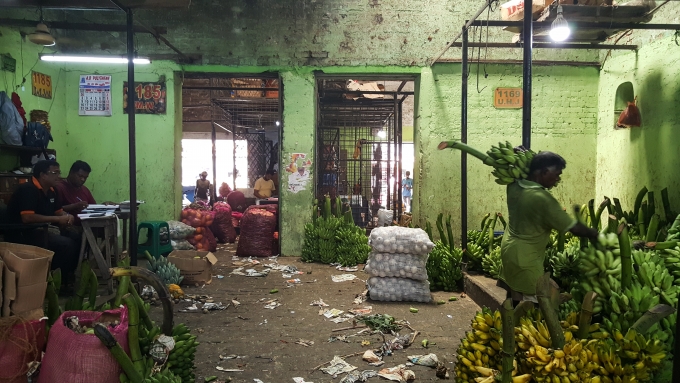
Manning Market used to be incredibly busy. It was the central point of commerce, where practically everyone went for their grocery shopping. However, business has reduced significantly now, with consumers preferring the ease and access of supermarkets instead. Image credit: Aisha Nazim
Nihan Jayaweera is a middleman, coordinating between the vendors and hotels. With a tiny room-like office crammed with a table, his chair, and a small stool, he says he’s been in the ‘hotel supply’ business here since 1983.
Profits made from the Manning Market once upon a time were enough to provide for his family and see his kids through school, he said. However, times have changed and business has drastically decreased. Making a livelihood now is a struggle.
“Colombo has become really crowded now, and this isn’t the best place for a busy marketplace. There’s nowhere to park, the buildings are derelict, and it’s never seen an upgrade since it was first built over a hundred years ago. We need to maintain and preserve these, but nothing of the sort has been done,” Jayaweera added.

Despite being in constant use over the last century, it is evident that no effort has been invested in preserving the place. Image credit Aisha Nazim
Despite this, he does not see the market’s scheduled move to Peliyagoda as something negative.
Instead, he says, Peliyagoda will become the next commercial hub. In 2016, the Urban Development Authority (UDA) allocated 25 acres of land in Peliyagoda, close to the fish market, for Manning Market’s relocation. While dates as to when the project will be completed is as yet unconfirmed, Jayaweera states that the move will take place in 2020.
“It really won’t make a difference to clients who buy wholesale produce. It’ll be a much larger, cleaner area, and there will be plenty of space for everything, including designated parking areas,” he said.
The UDA Deputy Director of Planning Janaka Ranaweera had also confirmed that the move was predominantly to ease traffic congestion in Colombo.
“Transport was the main reason for the shift. At Peliyagoda, which is already connected to the highway, we are planning to develop connecting roads, with the central point being Kadawatte,” Ranaweera told The Sunday Times.
Meanwhile, we asked Jayaweera for his insights as to why business has lessened over the years, and why Manning Market isn’t the household name it once was.
“Supermarkets,” he responded simply. “There’s one on every other corner and people find it much easier to just go there and pay by card—as opposed to carrying cash here, looking for parking, and making their way here. Back in the day, this used to be the main economic centre, but now there are plenty like this.”
This piece is part of Roar Media’s series on archiving the changing facets of Colombo. We have previously reported on the changing streets of Slave Island, Colpetty as it once was, and of Bambalapitiya in the 1960s and 1970s among others.
Cover image credit: Aisha Nazim


